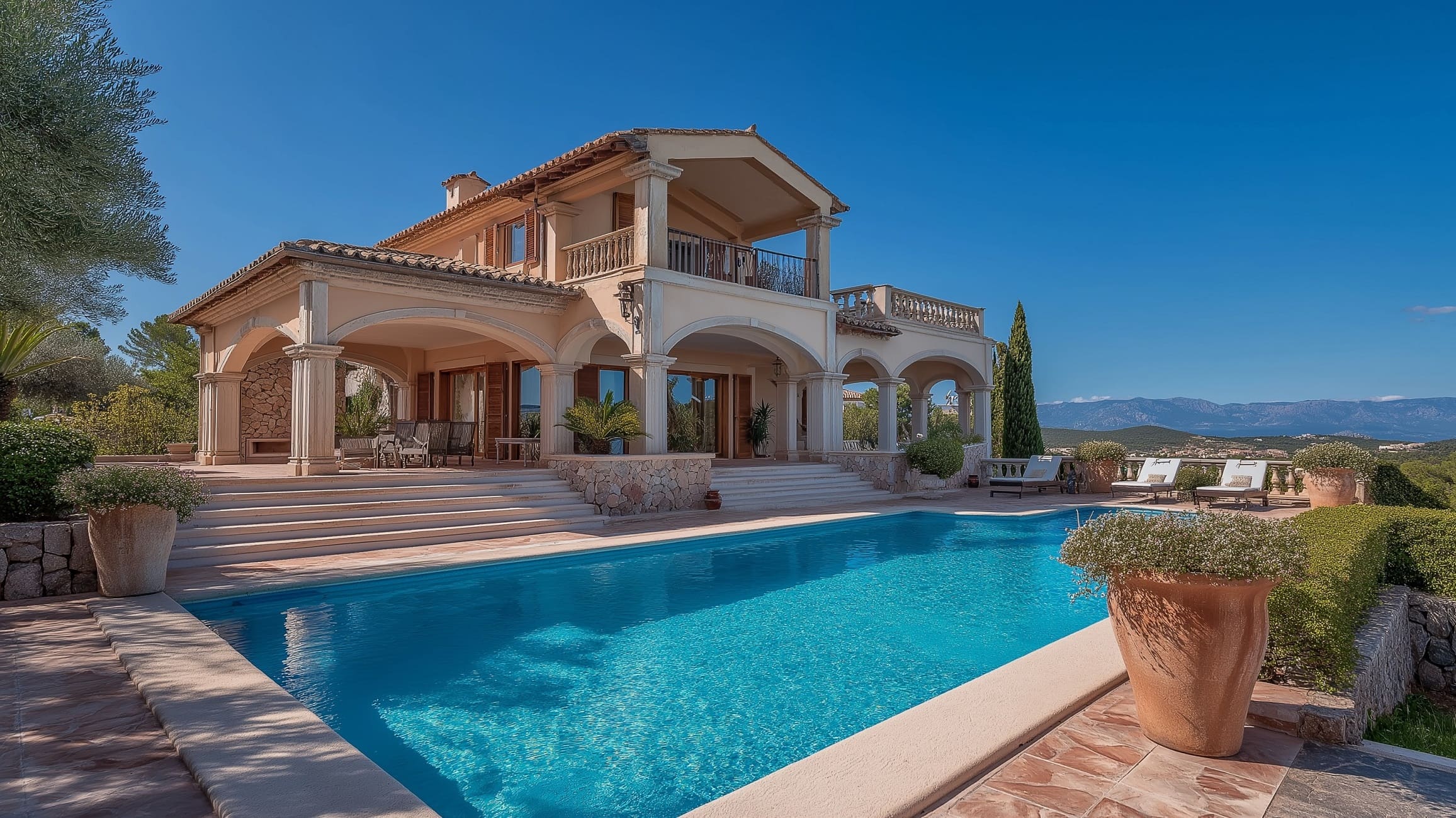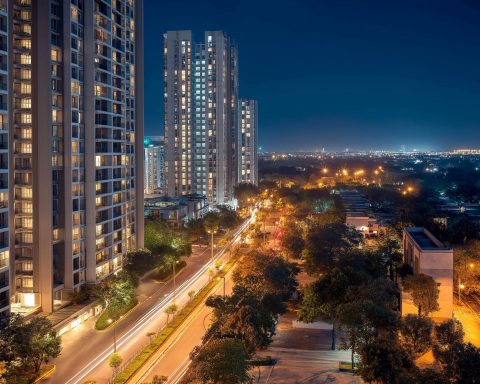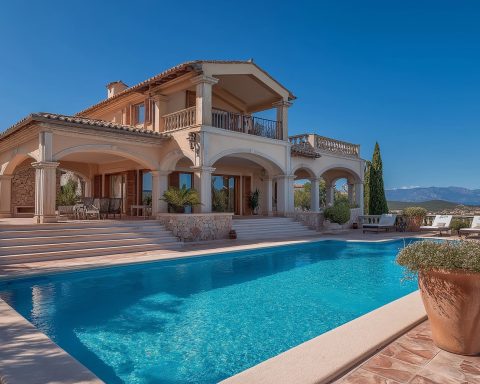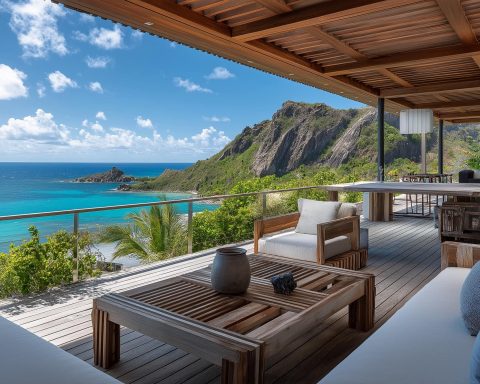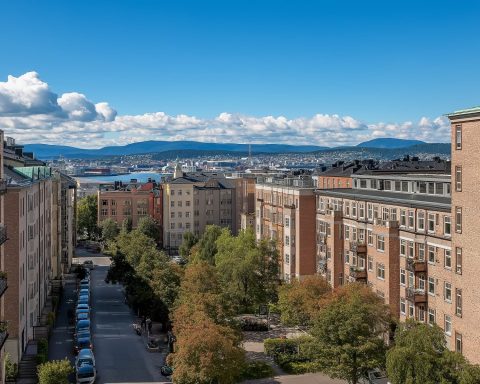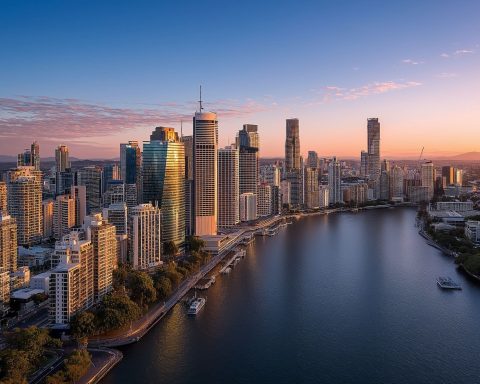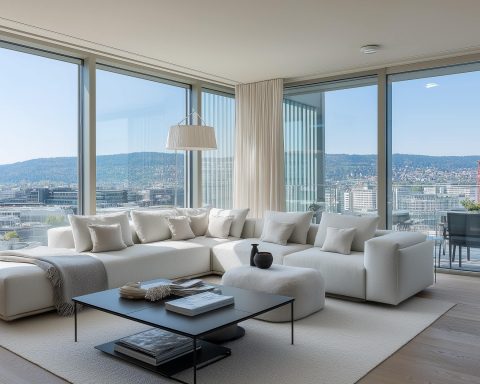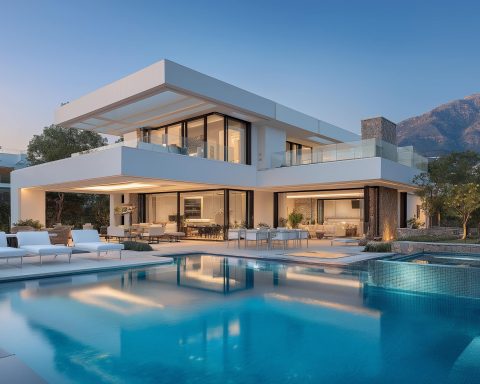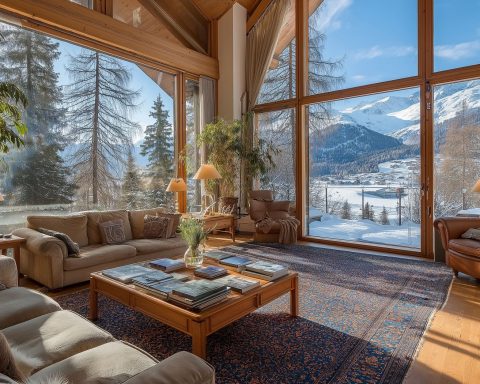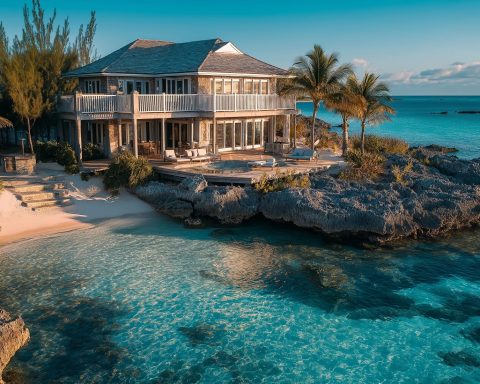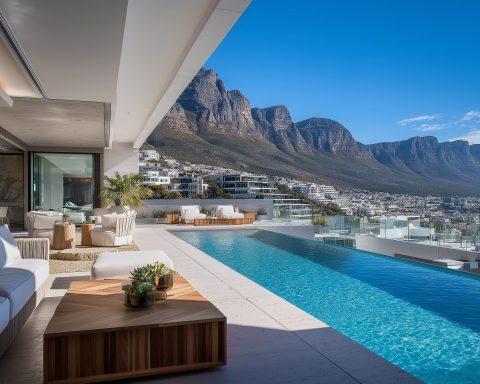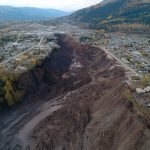Market Overview 2025
Mallorca’s real estate market is riding a wave of record-high prices and robust demand as we enter 2025. The Balearic Islands (led by Mallorca) have seen some of the fastest-growing property prices in Spain, with a nearly 19% year-on-year jump in 2024 – the highest in the country privatepropertymallorca.com. By late 2024, average home prices in Mallorca reached around €4,700–4,900 per square meter, far above the national average privatepropertymallorca.com. This surge has been fueled by a perfect storm of limited supply and intense demand, set against Mallorca’s strong economic backdrop. The island’s economy is off to a strong start in 2025, growing slightly faster than Spain overall, thanks in part to a construction rebound and record tourism figures spanishpropertyinsight.com spanishpropertyinsight.com. Despite global headwinds like inflation and higher interest rates, Mallorca’s real estate market remains resilient. Fewer sales are being recorded than the frenzy of 2022, but buyer interest remains high, especially among foreign and high-net-worth buyers. All signs point to Mallorca retaining its status as a property hotspot in 2025, albeit with price growth cooling to a more moderate pace compared to the double-digit spikes of the past two years.
Pricing Trends and Forecasts
Home prices in Mallorca have been climbing steadily and are at all-time highs. Table 1 below highlights average property prices per square meter in select regions across the island and their recent growth:
| Region | Avg. Price (€/m², end 2024) | Annual Change (2024) |
|---|---|---|
| Palma (City) | €4,442/m² yes-mallorca-property.com | +12.7% yes-mallorca-property.com |
| Port d’Andratx (SW luxury) | €8,991/m² yes-mallorca-property.com | +4% yes-mallorca-property.com |
| Santa Ponsa (SW) | €6,517/m² yes-mallorca-property.com | +8% yes-mallorca-property.com |
| Alcúdia (North) | €4,273/m² yes-mallorca-property.com | +13% yes-mallorca-property.com |
| S’Arenal (Bay of Palma) | €3,664/m² yes-mallorca-property.com | +25.9% yes-mallorca-property.com |
| Manacor (East inland) | €2,931/m² yes-mallorca-property.com | +30.2% yes-mallorca-property.com |
Table 1: Average property asking prices and annual increase for selected Mallorca locations yes-mallorca-property.com yes-mallorca-property.com.
As shown above, prices are highest in the southwest luxury enclaves – e.g. ultra-prime Port d’Andratx tops €8,900/m² – while emerging areas saw the biggest jumps. More affordable markets like S’Arenal (outside Palma) and Manacor surged 25–30% in one year yes-mallorca-property.com, as buyers priced out of the priciest zones seek better value elsewhere yes-mallorca-property.com. Overall, Mallorca’s average price hit ~€4,707/m² by end-2024, up from ~€4,083 a year prior yes-mallorca-property.com. That 13%+ annual rise outpaced the island’s 10% growth in 2022 yes-mallorca-property.com, underscoring how heated the market became post-pandemic.
Looking ahead, experts forecast a gentle cooldown. Most analysts predict Mallorca’s prices will continue rising in 2025, but at a slower rate of around 5–7% overall yes-mallorca-property.com. High-end luxury homes may still see 7–10% uplifts, while mid-range segments are expected to grow ~5% yes-mallorca-property.com. Key drivers – limited new housing supply, costly construction, and steady foreign demand – remain in play yes-mallorca-property.com. Barring any major shocks, 2025 and the coming years should bring moderate price appreciation rather than another speculative spike. In fact, some price corrections have already appeared: about 15–17% of resale listings saw price reductions in 2024 as certain sellers adjusted expectations privatepropertymallorca.com. Nevertheless, with Mallorca’s property values now the highest in Spain, even a modest growth rate keeps the island firmly in “seller’s market” territory privatepropertymallorca.com.
Development Activity & Urban Planning
After years of constrained development, Mallorca is cautiously ramping up new construction to meet housing demand. Residential building permits jumped 27.6% year-on-year in Q1 2025, a sharp rebound not seen since 2021 spanishpropertyinsight.com. March 2025 alone saw a nearly 68% surge in permits issued for new homes spanishpropertyinsight.com. This construction boom is now a key driver of the Balearic economy, signaling efforts to boost housing supply. A recent political agreement aims to reclassify some rural land for residential use, potentially unlocking new development zones across the islands (including smaller towns) to alleviate the housing crunch yes-mallorca-property.com.
However, strict urban planning regulations and land scarcity still impose limits privatepropertymallorca.com. Local authorities have long restricted overbuilding to protect Mallorca’s environment and avoid repeating the mistakes of Spain’s coastal building frenzy. New construction is concentrated in select areas and redevelopment projects, meaning new-build homes remain a relatively small (but high-priced) segment privatepropertymallorca.com. For example, the “Aire de Llevant” project in Palma will add 99 modern flats near Portixol, but such larger developments are infrequent metrovacesa.com.
Urban planning is also focusing on infrastructure upgrades to improve quality of life. Palma’s 2025 city budget allocates €78.7 million to infrastructure, including refurbishing central plazas and creating new green spaces investropa.com. Notably, a new light rail tram (Trambadia) is underway, connecting Palma’s city center to the airport and eastern bay suburbs by 2025–2026 investropa.com. This tram line – fully funded by Spain’s government – will carry an estimated 27% of Palma’s public transit demand and reduce congestion investropa.com. Such projects enhance urban mobility and are already boosting the appeal (and rents) of areas along the route. In fact, neighborhoods benefiting from new infrastructure have seen rents tick up, as tenants are willing to pay a premium for better connectivity investropa.com investropa.com.
On the policy side, tourist development is being balanced with sustainability. The regional government continues to enforce caps on tourist accommodation growth – for instance, limits on new hotel beds and vacation rental licenses – to manage overcrowding investropa.com. While these restrictions constrain new resort construction, they also help preserve Mallorca’s environment and push developers toward quality over quantity. Overall, the development outlook for the coming years is measured expansion: more cranes on the skyline than in the recent past, but Mallorca is far from any unchecked building boom. The focus is on targeted projects, renovating existing properties, and infrastructure that adds long-term value, aligning with the island’s sustainable growth strategy.
Tourism’s Impact on Real Estate
It’s impossible to overstate the role of tourism in Mallorca’s property market. The island welcomed record numbers of visitors in early 2025, with 1.28 million tourists in Q1 (up 2.6% from the prior year) and higher-value spending per traveler (+5.7% total expenditure) spanishpropertyinsight.com spanishpropertyinsight.com. This thriving tourism sector exerts a powerful influence on real estate in several ways:
- Short-Term Rentals & Vacation Homes: Demand for holiday rentals remains sky-high. Many investors purchase apartments or villas to rent to tourists, drawn by attractive yields in peak season. Even with legal limits, “everyone does it anyway” as one insider quipped, highlighting how lucrative vacation rentals can be spanishpropertyinsight.com spanishpropertyinsight.com. This trend, however, squeezes the housing supply for locals, contributing to an affordability crunch for long-term residents. In extreme cases, essential workers have struggled to find housing near job centers in summer – a situation that sparked debate about capping tourist rentals to free up homes for locals spanishpropertyinsight.com spanishpropertyinsight.com.
- Rising Rents: Long-term rental prices have soared, partly due to competition from holiday lets and limited availability. In fact, rental rates in the Balearics jumped ~30% in a recent year to record highs investropa.com. The government responded with stricter rental regulations – such as tighter licensing for Airbnb-style rentals and declaring high-demand zones where rent increases are limited. These measures have had mixed effects: they curbed new vacation rentals in certain areas (Palma, for instance, banned short-term rentals in apartment buildings), but also reduced the pool of homes for long-term rent, inadvertently driving rents up further amid scarcity privatepropertymallorca.com.
- Hotel Investment: The booming tourism numbers translate into strong hotel occupancy and profitability. Boutique hotels average over 80% occupancy in 2025 yes-mallorca-property.com, and even mid-range resorts hover around 75% booked yes-mallorca-property.com. With typical hotel investment payback periods of ~7–10 years yes-mallorca-property.com, global hospitality investors see Mallorca as a solid bet. We’re seeing conversions of heritage buildings into upscale boutique hotels and agrotourism fincas (rural estates offering lodging) to cater to eco-conscious travelers. This blurs the line between commercial and residential real estate, as some luxury villas double as income-generating vacation properties.
- Quality of Tourism vs. Quantity: Local planners are increasingly focused on attracting high-quality, sustainable tourism rather than sheer volume spanishpropertyinsight.com. An environmental tax on tourists and limits on cruise ships in Palma’s port are examples of policies aimed at mitigating tourism’s strain on resources spanishpropertyinsight.com. From a real estate perspective, this means emphasis on renovating and upgrading existing hotels and holiday homes (to cater to affluent visitors) instead of building mass-market accommodations. It also boosts interest in properties with unique offerings – e.g. country homes that can be licensed for agrotourism or villas designed as wellness retreats.
In summary, tourism is both a boon and a challenge for Mallorca’s property market. It drives investment and keeps demand resilient (even during global economic swings, people continue to flock to Mallorca’s sun and sea), but it also creates tension in housing accessibility for locals and workers. The ongoing task for policymakers and investors alike is finding the right balance between tourism growth and sustainable housing – a dynamic that will shape real estate trends in the coming years as much as any other factor.
Foreign and Expat Investment Influence
Mallorca’s allure extends far beyond Spain’s borders – and this international demand is a cornerstone of the island’s real estate boom. Foreign buyers account for roughly one-third of all property purchases in the Balearic Islands, by far the highest share of any region in Spain majorcadailybulletin.com. In late 2024, 32.5% of home sales were to foreign nationals (vs ~15% nationwide) majorcadailybulletin.com. This influx of overseas capital has a profound impact:
- Who’s Buying: Europeans dominate the ranks of foreign buyers. German and British buyers lead the pack – historically, Germans were the top investors in Mallorcan property, though Britons have recently surged as well majorcadailybulletin.com. Together, these two groups make up an estimated 60%+ of foreign purchases. Other significant buyer nationalities include the Swedes, Norwegians, and other Nordics, the French and Dutch, and increasingly Swiss and Austrian investors privatepropertymallorca.com yes-mallorca-property.com. There’s also a notable rise in American buyers (and Canadians) in the past couple of years, who now form around 13% of foreign transactions – a trend attributed to the strong dollar and a post-pandemic interest in European second homes charlesdel.com. Even buyers from the Middle East (UAE, etc.) have entered Mallorca’s ultra-luxury villa market yes-mallorca-property.com.
- Why Mallorca: Foreigners are drawn by Mallorca’s lifestyle and stability. The island offers a rare combination of Mediterranean climate, modern infrastructure, safety, and culture that appeals to retirees, second-home seekers, and “digital nomads” alike yes-mallorca-property.com. For EU nationals, buying in Mallorca poses no residency hurdles, and for non-EU citizens, Spain’s Golden Visa program (residency through property investment) has been a major incentive. Notably, over 35% of Balearic real estate deals in 2023 involved foreign buyers, many aiming for Golden Visas investropa.com. Even though Spain moved to phase out the Golden Visa by property (set to end in 2025), applications submitted before the cutoff will be honored investropa.com. This prompted a last-minute rush from non-EU investors (e.g. from the U.S., China, Middle East) looking to “buy a foothold” in Europe via Mallorca’s property market investropa.com investropa.com.
- Impact on Prices: The steady stream of affluent foreign buyers has effectively pushed Mallorca’s prices upward, especially in desirable coastal and historic areas. Overseas buyers often have greater purchasing power and are willing to pay premium prices, which local salaries cannot compete with. This has transformed certain towns into international enclaves – for instance, neighborhoods like Santa Catalina in Palma or Port de Sóller have a distinctly cosmopolitan feel, with foreign-owned cafés and multilingual street life, but also higher housing costs. The upside is a strong market for luxury and a global pool of demand insulating Mallorca from domestic downturns charlesdel.com. The downside is locals can be priced out; it’s a classic tale of a “lifestyle” market where foreign wealth drives real estate beyond local fundamentals spanishpropertyinsight.com spanishpropertyinsight.com.
- Policy and Perception: The surge in foreign ownership has sparked some political debate. There have been calls by local politicians to restrict or heavily tax foreign property purchases to cool the market for locals – e.g. a (unlikely) proposal of a 100% tax on home buys by non-residents was floated, sending minor shockwaves through expat circles yes-mallorca-property.com. While such extreme measures are not in force (and are seen as low-probability yes-mallorca-property.com), the very discussion reflects local concerns. On the other hand, recent national regulations have actually streamlined foreign investment procedures (such as Spain’s 2023 decree clarifying foreign investment authorizations) to avoid deterring buyers investropa.com. Overall, Mallorca remains very welcoming to international investors, but we can expect continued conversation about how to keep housing accessible for Mallorcans in the long run.
In summary, foreign buyers are a driving force in Mallorca’s real estate – injecting capital, sustaining the luxury segment, and often showing resilience even if local demand softens. The island’s cosmopolitan property scene is likely here to stay, so long as Mallorca continues offering the quality of life and investment stability that global buyers seek.
Regional Market Comparisons and Opportunities
Though Mallorca is a relatively small island, its real estate landscape is diverse – each region has its own character, price level, and opportunities. Below we break down notable areas, including Palma, Sóller, Alcúdia, and others, to highlight regional dynamics:
- Palma de Mallorca (Capital City): Palma is the vibrant heart of the island and a property market unto itself. Home to around half the island’s population, Palma offers everything from historic old-town apartments to modern seafront condos. Average prices in Palma city hover around €4,400/m² yes-mallorca-property.com, having risen ~13% in the past year. Central districts (Santa Catalina, Jaime III, Portixol, etc.) are in high demand for their mix of culture, nightlife, and amenities – appealing to young professionals, expats, and downsizing retirees alike. There’s strong demand for apartments and penthouses in Palma, especially renovated units with terraces. For example, the trendy Santa Catalina area remains a hotspot for buyers seeking urban living with character. Inventory is tight, and new developments within Palma are mostly upscale refurbishments due to scarce land. For investors, Palma’s rental market is the most liquid on the island (both long-term and high-end holiday rentals, though holiday licenses for city apartments are now restricted). The upcoming tramline and civic improvements are further boosting Palma’s appeal for the coming years investropa.com. Despite being pricier than most of the island, Palma still presents opportunities – especially in up-and-coming neighborhoods on the fringes of the center, which offer slightly better value and strong growth potential as the city expands.
- Southwest Mallorca (Calvià, Andratx, etc.): The southwest coast is Mallorca’s glamour belt, renowned for luxury resorts and celebrity villas. It includes areas like Puerto Portals/Bendinat, Port d’Andratx, Santa Ponsa, and Sol de Mallorca. This is where you find the island’s most expensive real estate: think sleek contemporary villas, waterfront estates, and gated communities. Prices in prime pockets range from €6,000 to €9,000 per m² on average yes-mallorca-property.com yes-mallorca-property.com – with record-sale villas far exceeding those averages. For instance, Port d’Andratx averages ~€9k/m² yes-mallorca-property.com, among the highest in Spain, thanks to its picturesque harbor and luxury appeal. Interestingly, price growth here was modest (~+4% last year yes-mallorca-property.com) as values were already sky-high, suggesting a mature market. Opportunities in the southwest lie in the fringes: areas like Camp de Mar, El Toro (Port Adriano), or inland Calvià village see strong interest at (slightly) lower price points, and new luxury developments (like designer villas in Camp de Mar’s hills) are coming to market to meet demand. The southwest is also a hub for high-net-worth buyers – both foreigners and Spanish elite – and thus relatively immune to short-term market dips. Investors focused on luxury rentals or flips will find this region attractive; high-end villas here continue to fetch premium rents and often sell faster than mid-range homes elsewhere yes-mallorca-property.com. In 2025 and beyond, the southwest is expected to maintain its luxury boom, with particular demand for modern amenities (smart homes, sustainable features) and sea views.
- North & Northwest (Sóller, Deià, Pollença, Alcúdia): This region, stretching across the Tramuntana mountains and down to the northern bays, combines scenic beauty with exclusivity. Towns like Sóller, Deià, and Valldemossa in the northwest mountains are famed for their idyllic landscapes and rustic stone fincas – attractive to artists, affluent expats, and anyone seeking a quieter slice of paradise. Prices in Sóller average around €5,500–€5,700/m² for properties, reflecting its desirability engelvoelkers.com. In fact, apartment prices in Sóller jumped by double digits recently (+17.5% in 2024) amid limited supply engelvoelkers.com. Coastal enclaves like Puerto de Sóller and Deià’s coast are extremely pricey due to rarity of stock and protected land (Deià consistently ranks as one of Spain’s most expensive villages per m²). Moving eastward, the Pollensa and Alcúdia area (north) offers a mix of heritage towns and beach resorts. Alcúdia’s prices (~€4,300/m²) rose ~13% last year yes-mallorca-property.com, showing its growing appeal. The nearby Port de Pollença and Port d’Alcúdia are popular for family holiday homes and have active rental markets in summer. Buyers in the north are a mix – many British families and retirees favor this area, along with other Europeans who enjoy the more laid-back atmosphere compared to the southwest. The opportunities here often involve older properties with renovation potential: e.g. a traditional village house in Pollença’s old town or a country home on the outskirts of Sóller that can be restored (demand is rising for restored fincas with modern comforts). With the Tramuntana region’s UNESCO World Heritage status limiting new builds, existing properties hold value well and often see consistent appreciation.
- East & Southeast (Coastal Gems and Inland Towns): Mallorca’s eastern side, from the hilltown of Artà down to Santanyí and the Ses Salines area, has traditionally been quieter but is now on investors’ radar. This area boasts beautiful calas (coves) and beaches, charming villages, and more land availability than the southwest. Consequently, prices are lower on average – for instance, Felanitx in the southeast averages under €2,000/m² yes-mallorca-property.com, and even the popular market town of Manacor (Mallorca’s second city, inland east) is around €2,900/m² yes-mallorca-property.com. Notably, some eastern municipalities saw the island’s biggest price hikes recently (Manacor spiked 30% in a year yes-mallorca-property.com), as bargain-hunting buyers turned east for affordability yes-mallorca-property.com. Coastal spots like Cala d’Or, Portocolom, or Colònia de Sant Jordi attract overseas buyers looking for reasonably priced seaview apartments or villas, often at a fraction of Palma prices. Meanwhile, the Santanyí area (southeast tip) has become a luxury sleeper hit – celebrity and upscale buyers have snapped up countryside estates around Santanyí and Cas Concos, drawn by the picturesque landscape and privacy. New upscale developments are rarer here, but there is some boutique development (e.g. a few new seafront apartment complexes near Cala d’Or). For investors, the east/southeast offers value and growth potential – rental yields can be solid in summer due to tourism, and as infrastructure slowly improves (better roads, fiber internet for remote workers, etc.), these towns could see further price convergence with the more developed west.
- Central & Inland (The “Pla” Plain and Inca): The island’s interior – villages like Alaró, Binissalem, Sineu, as well as the small city of Inca – forms the agricultural heartland. Historically, this region had the most affordable real estate on Mallorca, and indeed prices remain lower (often €1,500–€3,000/m² range yes-mallorca-property.com). However, a post-pandemic desire for space and tranquility has boosted inland demand. Towns such as Alaró and Santa Maria (within 20-30 minutes of Palma) are now trendy for families and expats seeking vineyard views and easier prices; even entirely rural fincas have gained value as remote work made year-round country living feasible. For example, Binissalem’s prices (~€2,462/m²) jumped ~7.4% last year yes-mallorca-property.com, reflecting growing interest in wine country living. The central plain offers larger plots and traditional homes (many with needs for modernization) – great opportunities for those willing to renovate. Development here is minimal due to strict rural zoning, but there’s talk of easing some land for housing given the island’s need (the recent reclassification plans may especially impact interior municipalities). Investors looking at the interior might consider agrotourism projects (converting old estates to guest houses) or simply banking land, since land values are creeping up due to scarcity yes-mallorca-property.com. Overall, while the interior isn’t as flashy as the coasts, it offers a slice of authentic Mallorca and a real estate market that, in percentage terms, could see some of the strongest future growth from today’s relatively low base.
Each of Mallorca’s regions thus presents unique opportunities. Whether it’s Palma’s urban buzz, the southwest’s luxury lifestyle, the north’s natural serenity, or the east’s value proposition – the key is aligning one’s goals and budget with the right location. Importantly, all areas are benefiting from the island-wide trends of limited supply and high demand, so no region is “left behind” – it’s more a question of which areas will grow fastest versus steadily. Savvy buyers and investors are advised to watch for pockets with upcoming infrastructure (new roads, ports, etc.), and those “next hot neighborhoods” adjacent to already prized locales.
High-end properties have led Mallorca’s real estate charge in recent years. Luxury real estate – villas priced €2 million and above, penthouses over €1 million, estates in the €5–10M range – is the most dynamic segment of the market. In 2024, demand for luxury homes surged so much that properties in the €1.5M+ bracket are selling faster than cheaper ones yes-mallorca-property.com yes-mallorca-property.com. Many agencies report that the higher the price, the quicker the sale in Mallorca’s current climate yes-mallorca-property.com. This appetite for luxury is driven by wealthy buyers from across Europe and beyond seeking trophies in Mallorca’s top locations (southwest coast, Son Vida, Deià, etc.). It’s to the point that some agencies now focus only on €1M+ listings because sub-million euro homes have slower turnover yes-mallorca-property.com. The luxury boom has also encouraged sellers to push asking prices to absurd levels in some cases (there are anecdotes of modest 1-bedroom apartments listed at €1M, or tear-down houses at €3M) yes-mallorca-property.com. While not every overpriced property sells, overall the prime market remains very tight on supply – there are simply more millionaires eyeing Mallorca than there are villas available.
In the commercial real estate arena, trends vary by sector:
- Office and Retail Space: Palma is the commercial hub, and its office market is relatively small (Mallorca’s economy is more tourism and services than corporate). Office vacancies in Palma are low, especially for modern high-grade space, since new construction is limited. With more entrepreneurs and remote-working expats moving in, co-working offices and flexible workspaces have been on the rise around Palma. Retail spaces in prime tourist areas (Palma’s old town, Portals Nous, resort promenades) remain coveted – luxury retail and hospitality operators are expanding to cater to the high-spending visitors. For example, international brands and boutique shops continue to open in Palma’s center as the city polishes its image as a year-round destination. Neighborhood retail outside tourist zones, however, depends on local spending, which is stretched by the cost of living. Investors in commercial properties are thus mainly targeting locations linked to tourism or affluent residential zones (e.g. a new upscale restaurant in Santa Catalina, or a small office building in the Paseo Marítimo area upgraded for foreign firms). Given the strong 2025 economy – with record employment in the Balearics and an expanding services sector spanishpropertyinsight.com spanishpropertyinsight.com – the outlook for well-positioned commercial real estate is positive, though high interest rates globally have tempered some speculative development.
- Hotels and Hospitality: As touched on earlier, the hotel sector is thriving. Investors are keen on acquiring or developing boutique hotels in Palma and picturesque towns. A boutique hotel room in Mallorca commands an average investment of about €180,000 per room, and many operate at over 80% occupancy yes-mallorca-property.com, which is an enviable metric. Mallorca’s push for quality tourism means upgrading existing hotels is a priority – we see many older hotels undergoing renovations to add spa facilities, “green” credentials, and premium offerings. New hotel construction is limited by policy (no one wants to see Mallorca overrun by concrete high-rises again), but there is some activity in repurposing buildings for tourist use. Additionally, hybrid models like aparthotels or condo-resorts are gaining popularity, blending residential and hospitality use. For investors, hospitality real estate in Mallorca offers solid returns, but also comes with regulatory scrutiny (obtaining tourist licenses, etc.). The year 2025 should be strong for hotel performance if tourism numbers hit new records as expected, keeping Mallorca’s commercial hospitality assets in high demand.
- Industrial and Logistics: This is a smaller slice of the pie – Mallorca’s island nature means it doesn’t host large industry, but there is always need for logistics (warehousing for goods, last-mile delivery to serve residents and hotels). Industrial real estate is concentrated in areas like Son Castelló or Can Valero (industrial estates near Palma). The surge in e-commerce and general economic activity has kept industrial vacancies low. Development in this category is modest due to land constraints, but yields are typically stable. One notable angle is renewable energy projects: investors are looking at land for solar farms, etc., though this strays into infrastructure more than traditional real estate.
In essence, Mallorca’s entire spectrum of real estate is buoyant going into 2025 – residential (from apartments to country homes), commercial (especially anything tourism-facing), and ultra-luxury segments are all seeing activity. The challenge for new entrants is navigating the inventory shortage and regulatory landscape, but the opportunity is that demand drivers (sunny climate, international appeal, limited supply) are not going away anytime soon.
Outlook and Tips for Buyers, Renters, and Investors
Mallorca’s real estate market in 2025 is dynamic and nuanced. Here we provide tailored insights for different stakeholders to help navigate the current climate:
- Home Buyers: Be prepared and decisive. With prices at record highs, buyers should do thorough research on regions and pricing to spot fair value. Keep in mind that asking prices might be optimistic, but truly cheap deals are scarce. If you find a property you love, act quickly (good homes often receive multiple inquiries). Financing costs are higher now than a couple of years ago (mortgage rates ~4–5% vs ~1% in 2021 yes-mallorca-property.com), so get pre-qualified and budget for higher monthly payments. Consider looking in areas just outside the hottest zones – for example, if Palma is too pricey, explore Marratxí or Llucmajor on the outskirts where you get more for your money yes-mallorca-property.com yes-mallorca-property.com. Also, factor in the long-term: Mallorca’s market has historically been resilient, so buying for lifestyle or long-term investment is likely to pay off, whereas short-term flips are trickier now that annual growth is slowing. Lastly, stay aware of legalities (especially non-residents: ensure you understand taxes and any license needs if you intend to rent out your property).
- Renters: Expect competition and consider all options. The long-term rental market in Mallorca is tight and expensive – it’s not unusual for well-located apartments to have many applicants and for prices to be €18–20 per m² per month (e.g. ~€1,850 for a 100m² flat) as of 2024 yes-mallorca-property.com. Start your search early and have documentation (proof of income, references) ready. Expand your search radius beyond the top neighborhoods; you might find better deals a bit further from the coast or tourist centers. If you’re open to it, consider off-season rentals or rent-to-buy arrangements – some owners will negotiate lower rent in winter or consider selling to a good tenant. For those seeking to rent tourist accommodations, note that new vacation rental licenses are limited, so supply is constrained – expect high rents for licensed holiday villas in summer. Ultimately, keep an eye on policy changes: the government is aware of the housing crunch, so new measures (like incentives for owners to offer long-term rentals) could emerge that might gradually improve the situation. Until then, renters should be prepared for premium prices and possibly settle for smaller spaces or roommates if on a tight budget, especially around Palma.
- Property Investors: Mallorca remains a solid bet, but pick your segment wisely. The island offers investors everything from steady-yield rentals to speculative luxury developments, but 2025’s climate favors a strategic approach. Given the strong demand, rental yields are attractive – gross yields around 5–6% for residential are attainable globalpropertyguide.com, and well-run holiday rentals can earn even more. Focus on liquid, high-demand locations: e.g. a seafront apartment in Palma or a villa in Santa Ponsa will always find tenants/buyers. According to local analysts, the most “liquid” investments now are: city apartments in trendy Palma districts, villas in prime southwest areas, small boutique hotels, and land with permits yes-mallorca-property.com yes-mallorca-property.com. These asset types offer both income and appreciation potential. Be mindful of regulatory risks: for instance, talk of a foreign buyer tax or the actual end of the Golden Visa might affect demand at the margins yes-mallorca-property.com. It’s wise to have a local lawyer or advisor to navigate zoning, rental laws, and taxes. If you’re an overseas investor, note that Spain has streamlined foreign investment rules recently to ease compliance investropa.com – but you’ll still need to report larger investments to authorities. On the horizon, expect price growth to moderate, so base your plans on realistic growth rates (5% a year rather than 15%). In short, invest for value and cash flow, not pure speculation. Mallorca’s fundamentals – limited land, global appeal, and a stable Eurozone location – form a strong foundation for long-term investors seeking a mix of lifestyle and profit.
In conclusion, Mallorca’s real estate market in 2025 is thriving but requires savvy navigation. Whether you’re buying a dream home, searching for a rental, or investing, success will come from staying informed about local trends, acting decisively when opportunities arise, and aligning with the island’s unique rhythm of life and business. With its blend of sun-soaked leisure and solid investment performance, Mallorca truly offers a “paradise property market” – and that looks set to continue in the coming years, as the island reinvents itself with sustainable growth and enduring allure.
Sources: Recent market analyses and data from real estate agencies, government and portal statistics, and investment reports were used in compiling this report, including Engel & Völkers market data engelvoelkers.com engelvoelkers.com, Idealista/Pisos.com via Yes! Mallorca Property yes-mallorca-property.com yes-mallorca-property.com, the Balearic government’s economic report spanishpropertyinsight.com spanishpropertyinsight.com, and local news (Majorca Daily Bulletin) majorcadailybulletin.com, among others. These sources underscore Mallorca’s current trends: soaring prices, driven largely by international demand, constrained supply, and the island’s enduring tourism-fueled appeal.
